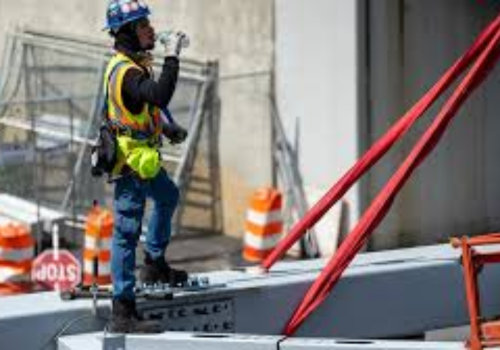
In recent years, New York City has seen a rise in construction accidents, highlighting the inherent dangers of the industry. Each year, numerous injuries and fatalities occur on construction sites, often due to lapses in safety measures.
Key Statistics and Insights:
Lack of Safety Precautions: Many accidents stem from inadequate safety protocols. It's not enough for companies to merely comply with regulations; they must implement thorough safety practices before entering a site and during operations, such as digging or using heavy machinery. The primary cause of accidents is often physical overexertion due to excessive workloads or inadequate rest periods.
Younger Workforce: Most construction accidents occur among younger adults, particularly those aged 18 and under. This demographic faces higher risks, primarily due to their inexperience and the physical demands of the job.
Prevalence of Back Injuries: Back injuries are among the most common in construction. These often arise when workers lift heavy objects or engage in tasks that require significant physical flexibility without assistance.
Smaller Companies at Higher Risk: Workers in smaller construction firms are more susceptible to injuries compared to those in larger companies. Smaller businesses often lack the necessary resources, training, and safety equipment, which can compromise worker safety.
Equipment-Related Incidents: Equipment such as ladders and scaffolding frequently contributes to accidents, often due to improper installation or lack of maintenance. Regular inspections and proper usage are vital to preventing these incidents.
Insurance Disparities: There is a significant gap between insured and uninsured workers in construction. Those without insurance face greater risks and lack financial protection for injuries sustained on the job.
Tool-Related Injuries: Injuries from tools are prevalent, with open wounds and punctures being common. Proper handling and maintenance of tools are crucial to minimizing these risks.
Electrical Hazards: Electric shock is one of the most severe threats on construction sites. Awareness of electrical risks and prompt reporting of any issues can help prevent serious injuries or fatalities.
Construction sites are inherently dangerous environments, particularly when safety measures are overlooked. It's crucial for workers to be aware of the risks they face and adhere strictly to safety protocols to mitigate the likelihood of accidents.
Perspective from Construction Owners: Key Takeaways
For construction owners, the rising accident statistics serve as a critical reminder of the importance of prioritizing safety. Here are some key takeaways:
Invest in Training: Providing comprehensive safety training for all employees, particularly younger and less experienced workers, can significantly reduce the risk of accidents.
Implement Safety Protocols: Establishing and enforcing strict safety measures, including regular equipment inspections and maintenance, is essential for safeguarding workers.
Foster a Safety Culture: Encouraging open communication about safety concerns and empowering employees to report issues can help create a culture of safety on job sites.
Evaluate Insurance Coverage: Ensuring all workers have adequate insurance can provide financial protection and peace of mind, which is crucial for maintaining a motivated workforce.
By adopting these practices, construction companies can enhance worker safety, reduce accident rates, and ultimately contribute to a more sustainable and responsible industry.
The smartest construction companies in the industry already get their news from us.
If you want to be on the winning team, you need to know what they know.
Our library of marketing materials is tailored to help construction firms like yours. Use it to benchmark your performance, identify opportunities, stay up-to-date on trends, and make strategic business decisions.
Join Our Community






